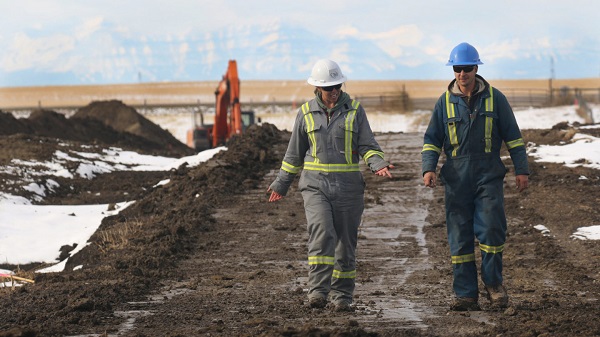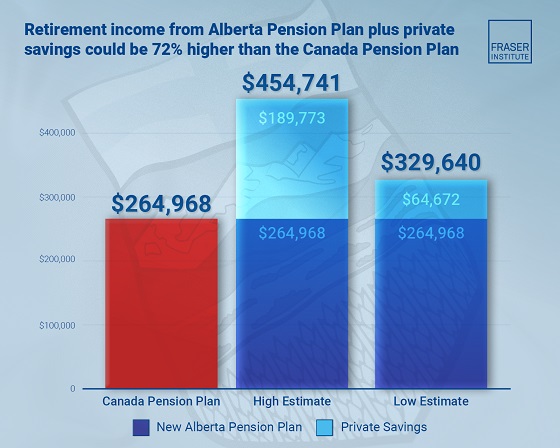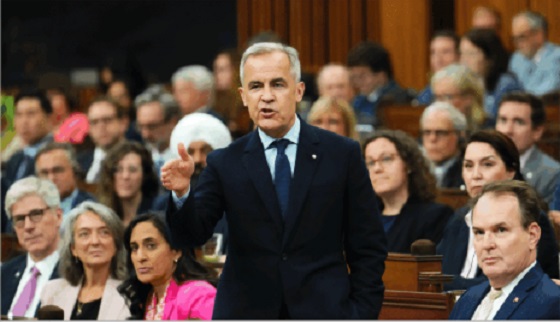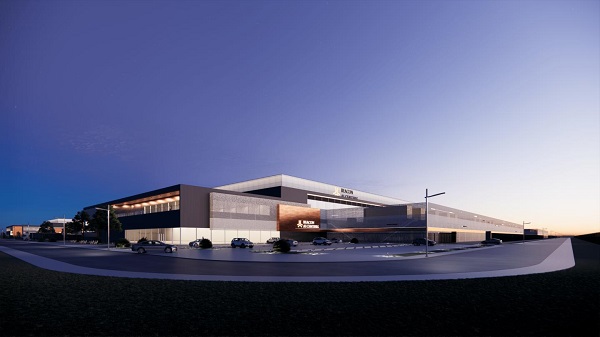Alberta
For second year in a row, Alberta oil and gas companies spend more than required on cleanup

From the Canadian Energy Center
By Grady Semmens$923 million spent cleaning up inactive wells, sites and pipelines in 2023
As a business owner, Ryan Smith values few things more than predictability when it comes to the oil and gas market and the demand for his company’s services.
That’s why knowing that next year in Alberta, the regulator requires at least $750 million worth of work cleaning up inactive oil and gas wells and other legacy energy infrastructure is tremendously helpful for the CEO of Calgary-based 360 Engineering & Environmental Consulting.
“Having a minimum spend in place for the province makes the market more predictable and consistent, which in turn helps our clients and our business plan for the future, which is a good thing,” says Smith, whose company has completed more than 5,000 site closure activities in Canada and internationally since 2015.
“Site closure has really emerged as a growth market over the last decade, especially in Western Canada where the regulatory systems for oil and gas are more advanced than anywhere else we are exposed to. It is an integral part of the energy lifecycle, and if it is done well it adds a lot of value to the industry.”
The Alberta Energy Regulator (AER) introduced an industry-wide minimum “closure” spending requirement in 2022, part of Alberta’s Inventory Reduction Program to accelerate the remediation of inactive oil and gas wells, facilities and pipelines across the province.
The mandatory quota determines the minimum level of work a company must conduct primarily to decommission and reclaim a proportion of its inactive inventory.
Inactive wells are defined as those that have not been used for six months or a year, depending on what they are being used for. When a company decides that they will not reactivate an inactive well they decommission it through a process called abandonment.
A well is considered successfully abandoned after it is cleaned, plugged with cement, cut to a minimum of one meter below the surface and covered with a vented cap. After abandonment comes remediation and reclamation, where the land around the well is returned to the equivalent of its original state.
The first two years under the new rules saw Alberta’s energy industry significantly exceed the minimum closure requirements.
In 2022, companies spent more than $696 million, about 65 per cent more than the initial threshold of $422 million. The AER increased the minimum spend to $700 million in 2023, which producers surpassed by 22 per cent with total expenditures of $923 million.
The 2024 minimum remains at $700 million, while in July the regulator announced that the minimum spend for 2025 was raised to $750 million.
This closure work does not include remediation of oil sands mining sites, which is handled under the Mine Financial Security Program, nor does it include the closure of orphan wells (wells without a legal owner) managed by the industry-funded Orphan Well Association.
Gurpreet Lail, CEO of Enserva, an industry association representing energy service companies, suppliers and manufacturers, says there was an initial rush of closure work when the quotas were first put in place, but activity has since become more even as companies develop long-term closure plans.
“A lot of the low-lying fruit has been taken care of, so now companies are working on more complex closure files that take more time and more money,” Lail says.
Facility owners say that Alberta’s rules provide direction for planning closure and remediation work, which in the past may have been put on hold due to the ups and downs of the oil and gas market.
“When commodity prices are up, everyone is focused on drilling more wells and when prices are down, budgets are strained for doing work that doesn’t bring in revenue. Having a minimum spend makes sure closure work happens every year and ensures there is longer-term progress,” says Deborah Borthwick, asset retirement coordinator for Birchcliff Energy, an oil and natural gas producer focused in Alberta.
Over the last few years, Birchcliff has budgeted more than $3 million for annual facility closure work, far above its required minimum spend.
The company completed 11 well abandonments and decommissioned 23 facilities and pipelines in 2022, according to its latest environmental, social and governance report.
Borthwick says having the closure quota for 2025 already set has allowed it to plan ahead and line up the necessary service companies well in advance for next year’s remediation work.
Alberta
Median workers in Alberta could receive 72% more under Alberta Pension Plan compared to Canada Pension Plan

From the Fraser Institute
By Tegan Hill and Joel Emes
Moving from the CPP to a provincial pension plan would generate savings for Albertans in the form of lower contribution rates (which could be used to increase private retirement savings while receiving the same pension benefits as the CPP under the new provincial pension), finds a new study published today by the Fraser Institute, an independent, non-partisan Canadian public policy think-tank.
“Due to Alberta’s comparatively high rates of employment, higher average incomes, and younger population, Albertans would pay a lower contribution rate through a separate provincial pension plan while receiving the same benefits as under the CPP,” said Tegan Hill, director of Alberta policy at the Fraser Institute and co-author of Illustrating the Potential of an Alberta Pension Plan.
Assuming Albertans invested the savings from moving to a provincial pension plan into a private retirement account, and assuming a contribution rate of 5.85 per cent, workers earning the median income in Alberta ($53,061 in 2025) could accrue a stream of retirement payments totalling $454,741 (pre-tax)—a 71.6 per cent increase from their stream of CPP payments ($264,968).
Put differently, under the CPP, a median worker receives a total of $264,968 in retirement income over their life. If an Alberta worker saved the difference between what they pay now into the CPP and what they would pay into a new provincial plan, the income they would receive in retirement increases. If the contribution rate for the new provincial plan was 5.85 per cent—the lower of the available estimates—the increase in retirement income would total $189,773 (or an increase of 71.6 per cent).
If the contribution rate for a new Alberta pension plan was 8.21 per cent—the higher of the available estimates—a median Alberta worker would still receive an additional $64,672 in retirement income over their life, a marked increase of 24.4 per cent compared to the CPP alone.
Put differently, assuming a contribution rate of 8.21 per cent, Albertan workers earning the median income could accrue a stream of retirement payments totaling $329,640 (pre-tax) under a provincial pension plan—a 24.4 per cent increase from their stream of CPP payments.
“While the full costs and benefits of a provincial pension plan must be considered, its clear that Albertans could benefit from higher retirement payments under a provincial pension plan, compared to the CPP,” Hill said.
Illustrating the Potential of an Alberta Pension Plan
- Due to Alberta’s comparatively high rates of employment, higher average incomes, and younger population, Albertans would pay a lower contribution rate with a separate provincial pension plan, compared with the CPP, while receiving the same benefits as under the CPP.
- Put differently, moving from the CPP to a provincial pension plan would generate savings for Albertans, which could be used to increase private retirement income. This essay assesses the potential savings for Albertans of moving to a provincial pension plan. It also estimates an Albertan’s potential increase in total retirement income, if those savings were invested in a private account.
- Depending on the contribution rate used for an Alberta pension plan (APP), ranging from 5.85 to 8.2 percent, an individual earning the CPP’s yearly maximum pensionable earnings ($71,300 in 2025), would accrue a stream of retirement payments under the total APP (APP plus private retirement savings), yielding a total retirement income of between $429,524 and $584,235. This would be 22.9 to 67.1 percent higher, respectively, than their stream of CPP payments ($349,545).
- An individual earning the median income in Alberta ($53,061 in 2025), would accrue a stream of retirement payments under the total APP (APP plus private retirement savings), yielding a total retirement income of between $329,640 and $454,741, which is between 24.4 percent to 71.6 percent higher, respectively, than their stream of CPP payments ($264,968).

Joel Emes
Alberta
Alberta ban on men in women’s sports doesn’t apply to athletes from other provinces

From LifeSiteNews
Alberta’s Fairness and Safety in Sport Act bans transgender males from women’s sports within the province but cannot regulate out-of-province transgender athletes.
Alberta’s ban on gender-confused males competing in women’s sports will not apply to out-of-province athletes.
In an interview posted July 12 by the Canadian Press, Alberta Tourism and Sport Minister Andrew Boitchenko revealed that Alberta does not have the jurisdiction to regulate out-of-province, gender-confused males from competing against female athletes.
“We don’t have authority to regulate athletes from different jurisdictions,” he said in an interview.
Ministry spokeswoman Vanessa Gomez further explained that while Alberta passed legislation to protect women within their province, outside sporting organizations are bound by federal or international guidelines.
As a result, Albertan female athletes will be spared from competing against men during provincial competition but must face male competitors during inter-provincial events.
In December, Alberta passed the Fairness and Safety in Sport Act to prevent biological men who claim to be women from competing in women’s sports. The legislation will take effect on September 1 and will apply to all school boards, universities, as well as provincial sports organizations.
The move comes after studies have repeatedly revealed what almost everyone already knew was true, namely, that males have a considerable advantage over women in athletics.
Indeed, a recent study published in Sports Medicine found that a year of “transgender” hormone drugs results in “very modest changes” in the inherent strength advantages of men.
Additionally, male athletes competing in women’s sports are known to be violent, especially toward female athletes who oppose their dominance in women’s sports.
Last August, Albertan male powerlifter “Anne” Andres was suspended for six months after a slew of death threats and harassments against his female competitors.
In February, Andres ranted about why men should be able to compete in women’s competitions, calling for “the Ontario lifter” who opposes this, apparently referring to powerlifter April Hutchinson, to “die painfully.”
Interestingly, while Andres was suspended for six months for issuing death threats, Hutchinson was suspended for two years after publicly condemning him for stealing victories from women and then mocking his female competitors on social media. Her suspension was later reduced to a year.
-

 Business24 hours ago
Business24 hours agoMark Carney’s Fiscal Fantasy Will Bankrupt Canada
-

 Business2 days ago
Business2 days agoCarney government should apply lessons from 1990s in spending review
-

 Entertainment2 days ago
Entertainment2 days agoStudy finds 99% of late-night TV guests in 2025 have been liberal
-

 Alberta23 hours ago
Alberta23 hours agoTemporary Alberta grid limit unlikely to dampen data centre investment, analyst says
-

 Opinion1 day ago
Opinion1 day agoCharity Campaigns vs. Charity Donations
-

 Frontier Centre for Public Policy2 days ago
Frontier Centre for Public Policy2 days agoCanada’s New Border Bill Spies On You, Not The Bad Guys
-

 Daily Caller19 hours ago
Daily Caller19 hours ago‘Strange Confluence Of Variables’: Mike Benz Wants Transparency Task Force To Investigate What Happened in Butler, PA
-

 Uncategorized2 days ago
Uncategorized2 days agoCNN’s Shock Climate Polling Data Reinforces Trump’s Energy Agenda



